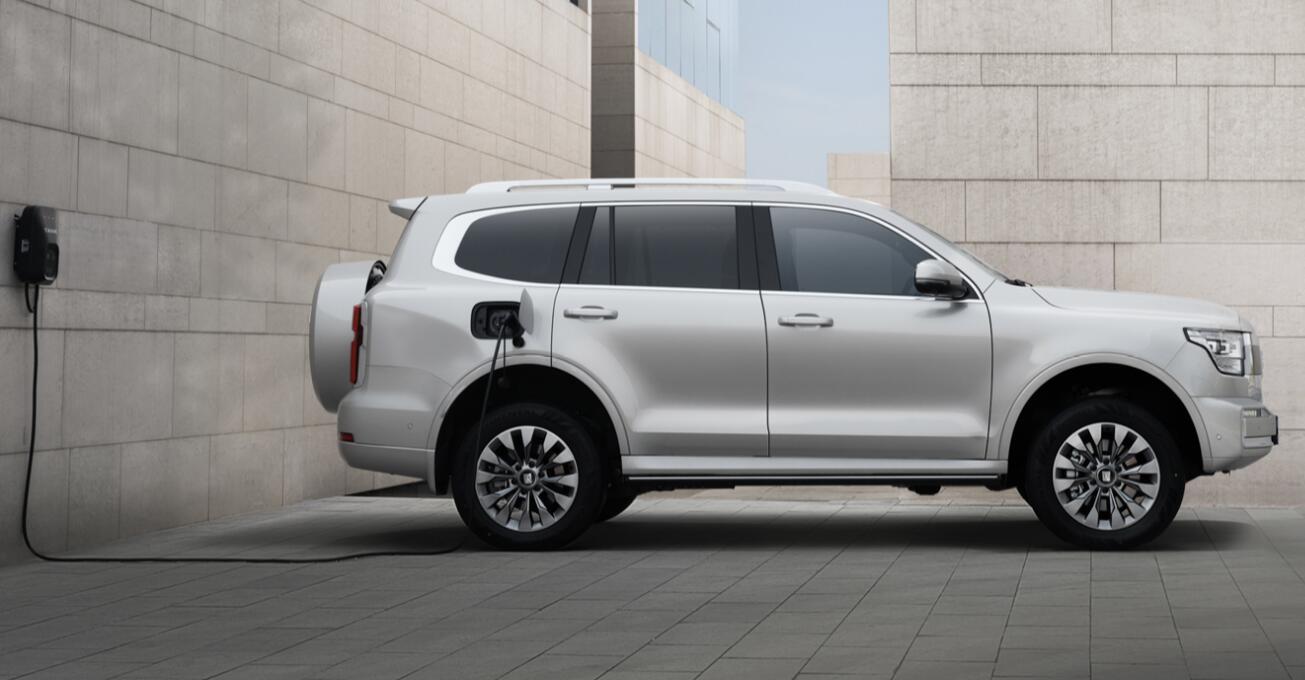The Tank brand has launched its first NEV model, the Tank 500 Hi4-T. The brand has sold more than 10,000 fuel-powered vehicles in most months of the past year.

(Image credit: Great Wall Motor)
Great Wall Motor is continuing its electrification transition, though it has fallen significantly behind major rivals, including BYD (OTCMKTS: BYDDY).
The automaker's personalized brand Tank officially launched the Tank 500 Hi4-T, the brand's first new energy vehicle (NEV) model, at an event yesterday, with only one version available and a starting price of RMB 335,000 ($46,290).
The Tank 500 Hi4-T is the plug-in hybrid vehicle (PHEV) version of the fuel-powered Tank 500 which is offered in nine versions with a starting price range of RMB 335,000 to RMB 395,000.
The Tank 500 Hi4-T's starting price of RMB 335,000 means that Tank is essentially phasing out the lower-trim versions of the Tank 500 with this PHEV model in order to gain a larger presence in the NEV market.
Tank's current models are all off-road SUVs, including the Tank 500 and the less expensive Tank 300.
The Tank 500 Hi4-T measures 5,078 mm in length, 1,934 mm in width and 1,905 mm in height, and has a wheelbase of 2,850 mm, which are essentially the same dimensions as the fuel-powered Tank 500, except for a slightly longer length than the latter's 5,070 mm.
The Tank 500 Hi4-T is powered by a 2.0T engine with a maximum power of 180 kW and a peak torque of 380 Nm, and an electric motor with a maximum power of 120 kW and a maximum torque of 400 Nm.
The Tank 500 Hi4-T has a combined power of 300 kW and 750 Nm of peak torque, and can accelerate from 0 to 100 km/h in 6.9 seconds.
The model is equipped with a ternary lithium-ion battery pack with a capacity of 37.1 kWh and has a pure electric range of 120 km in NEDC and 110 km in WLTC.
It supports fast charging, taking 24 minutes to charge from 30 percent to 80 percent and 42 minutes to recharge from 30 percent to 100 percent.
The Tank 500 Hi4-T has a fuel tank of 70 L and consumes 9.55 L per 100 km at the lowest charge under WLTC standards.
Powered by this powertrain, the Tank 500 Hi4-T has a combined WLTC fuel consumption of 2.2 L per 100 km.
Like the current mainstream NEV models, the Tank 500 Hi4-T is equipped with L2 driving assistance system with functions including smart parking, adaptive cruise control, lane assist, collision warning and automatic braking.
The Tank 500 Hi4-T show cars and vehicles used for test drives are already available at Great Wall Motor's stores.
Great Wall Motor is one of the most successful local car companies in China, but is clearly lagging behind in the NEV market.
In the past few months, Great Wall Motor has increased its efforts in the NEV market with the launch of several products including the Lanshan DHT-PHEV and the Haval Xiaolong.
Great Wall Motor sold a record 23,755 units of NEVs in May, up 104.13 percent year-on-year and up 59.83 percent from 14,863 units in April, according to data released earlier this month.
Including conventional fuel vehicles, Great Wall Motor's total sales in May were 101,020 units, up 26.18 percent year-on-year and up 8.49 percent from 93,107 units in April.
This means that NEVs contributed 23.5 percent of Great Wall Motor's sales in May.
As a comparison, its main competitor BYD stopped production and sales of vehicles powered entirely by internal combustion engines in March 2022 and switched to focus on producing plug-in hybrids and pure electric vehicles.
BYD sold 240,220 NEVs in May, up 108.99 percent year-on-year and up 14.23 percent from April.
The success of the Tank line of off-road SUVs over the past few years and the lesser competition they face may be one of the reasons for the brand's slow transition to electrification.
The Tank brand has sold more than 10,000 units per month over the past year, except for January and February of this year, when it sold 5,915 and 6,344 units, respectively.
($1 = RMB 7.2376)




